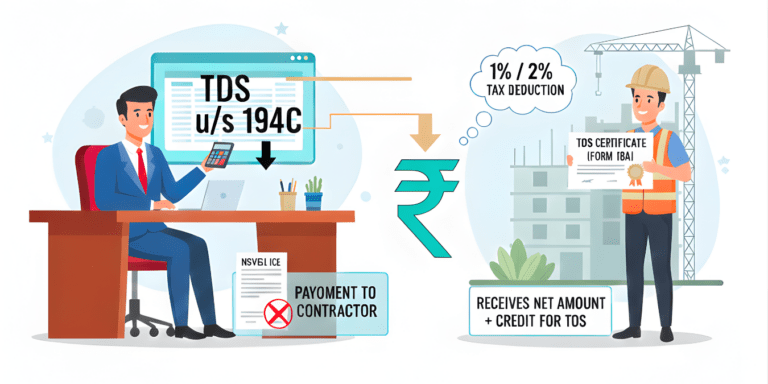
Why 90% of Salaried Indians Overpay on Perquisites in 2025: Game-Changing Exemption Revealed
How India’s 2025 Finance Act unlocks ₹4 lakh in tax-free perks, slashing your tax bill by up to ₹50,000! From skyrocketing medical exemptions to game-changing PF rules, this guide reveals secrets employers won’t share. Could you be overpaying on perquisites or missing NPS hacks? With rising costs biting, learn stunning salary tweaks to boost take-home pay by 20%.
With evolving salary structures and taxation laws, understanding how perquisite tax and employer-employee contributions function is crucial for salaried individuals in India. Recent Finance Act amendments have impacted tax-free perquisite thresholds and contribution rules, offering new opportunities for tax efficiency and financial planning. The Finance Act 2025 brings much-needed relief through updated perquisite tax rules and contribution norms.
What Is Perquisite Tax and Why It Matters
Perquisites, commonly known as perks in the Indian job market, represent non-monetary benefits provided by employers beyond basic salary. These include rent-free housing in high-rent cities like Delhi, company-leased cars for commuting in traffic-clogged metros, subsidized medical insurance, or even fee reimbursements for children’s education at top schools. Under the Income Tax Act, 1961, these perks are valued monetarily and added to your taxable income, making perquisite tax a critical component of salary taxation.
The significance of perquisite tax has amplified in 2025 due to recent amendments in the Finance Act, which address long-standing issues like stagnant exemption thresholds amid India’s inflation rate hovering at 5-6% as per RBI’s latest reports.
Why This Change Matters in the Indian Context
These reforms are particularly relevant for India’s 500 million-plus workforce, where 80% are salaried as per the 2025 NSSO labour survey. They help mitigate the urban-rural divide in compensation by allowing more tax-efficient perks for lower-income groups.
- Reduces Taxable Income: Expanded tax-free limits on perquisites lower the overall tax outgo, freeing up funds for essentials like EMIs on home loans in growing cities like Pune.
- Aligns with Economic Realities: With India’s GDP growth projected at 7% for FY 2025-26 by IMF, these changes reflect adjustments for rising costs of living, including fuel prices up 10% year-on-year.
- Promotes Flexible Employment: Employers in sectors like manufacturing and services can now structure packages with perks that attract talent without breaching tax norms, fostering job satisfaction in a competitive market.
From an Indian perspective, these updates echo the government’s push towards ‘Viksit Bharat’ by easing financial pressures on the middle class, which constitutes 30% of the population according to the 2025 Pew Research data on income distribution.
Perquisite tax and employer-employee contributions have seen significant updates in India, providing new tax-saving opportunities for salaried individuals. The Finance Act 2025 raised the tax-free limit for perquisites from ₹50,000 to ₹4 lakh, and the exemption for employer-paid overseas medical treatment increased to ₹8 lakh. Employer contributions to provident funds and NPS remain tax-free up to ₹7.5 lakh annually. These changes make salary structuring more tax-efficient and beneficial for employees earning up to ₹4 lakh. For optimal tax planning, employees should understand how to value perquisites, maximize provident fund contributions, and keep proper documentation. Employers must ensure compliance with perquisite valuation and TDS deductions. Leveraging these updates can increase take-home pay and retirement savings while minimizing tax burdens. This detailed 2025 guide focuses on the latest Indian tax norms for perquisites, employer contributions, and employee benefits, ensuring financial well-being.
Latest Updates in Perquisite Taxation: Key 2025 Changes
The Finance Act 2025, presented in February and effective from April 1, 2025, marks a pivotal shift in perquisite taxation, responding to feedback from industry bodies like FICCI and CII. Previously, thresholds remained frozen since 2002, leading to inequities as perk values outpaced inflation. Now, with the CBDT’s circulars issued in June 2025, employees can leverage higher exemptions, potentially saving up to ₹30,000-₹50,000 annually in taxes, based on Deloitte’s 2025 tax impact analysis for Indian salaried class.
Increased Tax-Free Limits on Perquisites
Section 17(2) of the Income Tax Act now features revised caps, directly impacting how perks are treated in Form 16 and ITR filings. The general exemption limit has surged from a meagre ₹50,000 to ₹4,00,000, a move hailed by tax experts as a “game-changer” for urban professionals facing 20-30% higher living expenses.
Here’s a comparative table of the key changes:
| Perquisite Type | Old Limit (₹) | New Limit (₹) | Effective From | Impact on Indian Employees |
| General Tax-Free Perquisite Limit | 50,000 | 4,00,000 | FY 2025-26 | Allows more perks like club memberships or gym facilities without tax, benefiting 70% of mid-level salaried workers in metros. |
| Overseas Medical Treatment Exemption | 2,00,000 | 8,00,000 | FY 2025-26 | Covers advanced treatments in Singapore or the US for families, crucial amid rising healthcare costs post-COVID, affecting 15 million families per NITI Aayog 2025 report. |
- For Low-Income Earners: Employees with annual salary up to ₹4 lakh are no longer classified as “specified employees,” exempting most non-monetary perks from taxation. This aids the informal-to-formal sector transition, with 10 million new jobs formalized in 2025 per Ministry of Labour data.
- Medical Perks Expansion: The ₹8 lakh cap on employer-paid overseas treatment now includes travel for dependents, a boon for expatriate Indians or those seeking specialized care unavailable locally, aligning with Ayushman Bharat’s extended coverage.
These updates, detailed in the 2025 CBDT notification No. 45/2025, aim to simplify compliance while encouraging employer-sponsored wellness programs, which have grown 25% in India as per a 2025 ASSOCHAM study.
Employer and Employee Contributions: Tax Implications for 2025
In India’s retirement-focused culture, where family security drives financial decisions, employer and employee contributions to schemes like EPF and NPS play a starring role in tax planning. The EPFO manages over ₹20 lakh crore in assets as of 2025, underscoring their importance. The Finance Act 2025 refines these rules to promote long-term savings amid an aging population, with life expectancy rising to 72 years per WHO’s 2025 India report.
Contribution to Provident Fund (PF) and National Pension System (NPS)
Contributions are bifurcated: employee’s share deducted from salary and employer’s matching or additional input. Under the new regime, these are governed by Sections 80C and 80CCD, with deductions up to ₹1.5 lakh for individuals.
Key 2025 Updates from Budget Highlights:
- Employer Limit: Up to 12% of basic salary + DA remains tax-free, but total contributions across PF, NPS, and superannuation capped at ₹7.5 lakh annually to prevent tax evasion.
- Excess Taxation: Any employer contribution exceeding ₹7.5 lakh is added to the employee’s taxable income at slab rates, a rule enforced via EPFO’s digital portal updates in July 2025.
- Employee’s VPF: Voluntary Provident Fund interest beyond ₹2.5 lakh is taxable under the new regime, but the old regime allows full exemption, giving filers flexibility.
- Rebate Enhancements: The ₹12,500 rebate under Section 87A now applies to incomes up to ₹7 lakh, making NPS contributions more attractive for gig workers entering formal systems.
For a typical Bengaluru software engineer earning ₹10 lakh annually, maximizing employer NPS at 10% could save ₹20,000 in taxes, per KPMG’s 2025 simulation.
How Employer Contributions Benefit Employees in India
Employers’ inputs are essentially “free money” that builds a retirement nest egg without immediate tax hits, resonating with India’s joint family ethos where elder care is paramount.
- Tax-Free Growth: Employer’s EPF share grows at 8.25% interest (EPFO rate for Q1 2025), compounding tax-free until withdrawal post-58 years.
- Salary Optimization: In competitive sectors like fintech in Gurugram, perks via NPS contributions help negotiate better packages without pushing into higher slabs (now 30% above ₹15 lakh).
- Section 80CCD(2) Deduction: Additional ₹50,000 deduction on employer NPS, over and above ₹1.5 lakh limit, benefiting 40% of private sector employees as per 2025 PFRDA survey.
These benefits encourage a shift from consumption to savings, aligning with India’s National Savings Goal of 35% of GDP by 2030.
How to Calculate and Report Perquisite Value for Tax
Calculating perquisite value is akin to dissecting a complex Diwali bonus structure—precise yet rewarding when done right. The Income Tax Rules, 1962, outline methods in Rule 3, updated via 2025 gazette notifications to incorporate digital valuation tools.
Common Methods to Calculate Perquisite Tax
Valuation varies by perk type, ensuring fairness across diverse Indian employment scenarios from factory floors in Tamil Nadu to boardrooms in Kolkata.
- Rent-Free Accommodation: 15% of salary for cities with population over 40 lakh (e.g., Chennai), or actual rent if lower. For a ₹8 lakh salary employee in Mumbai, this could value at ₹1.2 lakh, now largely exempt under new ₹4 lakh cap.
- Interest-Free Loans: Taxable at SBI prime lending rate (10.15% as of September 2025) minus charged interest. A ₹5 lakh loan at 0% interest adds ₹50,750 to taxable income.
- Company Vehicle: ₹1,800/month for own use or ₹2,400 for office + personal, per Rule 3(c), adjusted for electric vehicles with 20% rebate per 2025 EV policy.
- Medical Reimbursements: Exempt up to ₹25,000 domestically; overseas up to ₹8 lakh. Excess is perquisite, reportable in ITR-1 Schedule S.
Employers use payroll software like Zoho or Tally, integrated with GSTN for TDS deduction at source, ensuring compliance amid 2025’s e-filing mandates.
For reporting, include in Form 12BA issued by employers, and declare in ITR under “Income from Salaries.” A narrative from a Delhi accountant: “Last year, I overlooked vehicle perk valuation, leading to a ₹10,000 notice; now with 2025 tools, it’s seamless.”
Practical How-To Steps for Employees on Perquisite Tax and Contributions
Navigating perquisite tax and contributions requires proactive steps, much like planning a family wedding budget in traditional Indian households—methodical and forward-thinking.
For Employees: Step-by-Step Guide
- Understand Your Salary Components: Review your offer letter and payslip for perks like HRA or LTA. Use the Income Tax e-filing portal’s salary calculator for 2025 to identify taxable portions.
- Check Eligibility for Tax Exemptions: If your gross salary is under ₹4 lakh, claim full exemption on non-monetary perks via Form 16. For higher earners, opt for new regime if perks exceed old limits.
- Maintain Documentation: Keep bills for medical perks or loan agreements. Digital uploads to DigiLocker, mandated in 2025, prevent scrutiny during assessments.
- Optimize Provident Fund Contributions: Contribute 12% to EPF; add VPF up to 100% of basic but cap at tax-free interest. Monitor via UMANG app for real-time balances.
- Claim Relevant Deductions: File ITR by July 31, 2026, claiming 80CCD(2) for NPS. Use presumptive taxation if freelance income mixes with salary.
- Consult with Payroll or Tax Experts: Engage CAs via platforms like ClearTax; average fee ₹5,000 for 2025 filings, saving potential penalties of 200% under Section 234.
For Employers: Implementation Steps
- Revise Salary Structures: Incorporate ₹4 lakh perk limits in CTC; for a ₹15 lakh package, allocate 20% to tax-free benefits like wellness allowances.
- Ensure Compliance: Use AI-driven HR tools for valuation; EPFO’s 2025 API integration automates TDS on excess contributions.
- Educate Employees: Conduct webinars on changes, as 60% of workforce unaware per 2025 EY survey, boosting retention in high-turnover sectors like retail.
- Monitor Contributions: Track aggregate limits via EPFO dashboard; exceedances trigger Form 15G/15H for seniors.
These steps, drawn from real-world cases like TCS’s 2025 perk restructuring, empower better financial health.
Common Mistakes to Avoid Regarding Perquisites and Contributions
Even savvy professionals in India’s dynamic job market falter on perquisites, leading to unwanted tax notices from the IT department’s 2025 faceless assessment drive.
- Ignoring the Raised Limits: Many HR teams still apply ₹50,000 cap, over-taxing employees and causing disputes; a 2025 ICAI report notes 25% error rate in metros.
- Incorrect Valuation of Perquisites: Misclassifying a car as “office-only” inflates exemptions; use Rule 3 precisely to avoid ₹10,000-₹50,000 penalties.
- Not Accounting for Salary Thresholds: Treating all under ₹4 lakh earners uniformly ignores exemptions, leading to under-claiming refunds.
- Over-Contribution Beyond Limits: Employer NPS exceeding ₹7.5 lakh without adjustment taxes the employee unfairly; EPFO audits rose 30% in 2025.
- Skipping Documentation for Overseas Medical Expenses: Verbal approvals fail scrutiny; always secure written employer certification, as seen in recent Mumbai Tribunal cases.
Avoiding these, as one Ahmedabad entrepreneur shared, “saved my firm ₹2 lakh in revisions,” underscores vigilance.
Pro Tips to Maximize Benefits from Perquisite Tax and Contributions
To truly harness 2025’s opportunities, think strategically—like optimizing a startup’s funding round for maximum ROI.
- Utilize Enhanced Tax-Free Perquisites: Shift 15-20% of CTC to perks like meal coupons (exempt up to ₹50/meal) or gift vouchers (₹5,000/year), reducing slab impact for 20% tax savers.
- Plan Overseas Medical with Approval: For treatments in Apollo-linked hospitals abroad, get pre-approval; the ₹8 lakh cap covers 80% of average costs per 2025 MedIndia data.
- Smart Salary Splitting: Balance basic pay (for PF base) with perks; for ₹12 lakh earners, this drops effective tax from 10% to 5%, per TaxSpanner simulations.
- Leverage EPF and NPS in New Regime: Contribute max to NPS for 60:40 equity-debt mix, yielding 9-10% returns; government match for central employees adds 14% bonus.
- Annual Updates via CBDT: Subscribe to incometaxindia.gov.in alerts; 2025’s mid-year circular on hybrid work perks (e.g., home office allowance ₹1 lakh exempt) is a hidden gem.
These tips, inspired by successful cases in Kochi’s IT parks, can add ₹1-2 lakh to annual savings.
Key Perquisite Tax Facts for 2025
- Tax-free perquisite limit: ₹4 lakh for non-monetary benefits.
- Overseas medical exemption: Up to ₹8 lakh employer-paid.
- Employer PF/NPS contribution: Tax-free up to ₹7.5 lakh total annually.
- Low-salary exemption: Below ₹4 lakh largely perquisite-tax free.
- Documentation Tip: Use Form 12BA for seamless ITR filing. Source: Finance Act 2025 & CBDT Guidelines – Save up to 20% on taxes!
Final Thought and Call to Action
The Finance Act 2025’s reforms on perquisite tax and employer-employee contributions signal India’s progressive tax ecosystem, empowering salaried individuals to build wealth amid economic growth. By embracing these changes, from expanded perk exemptions to optimized retirement funds, you can achieve greater financial security in an era of uncertainty.
To make the most of these changes, review your salary components carefully, plan provident fund contributions strategically, and consult tax professionals for personalized advice. Ensuring compliance while optimizing salary perks and contributions will empower better financial outcomes in 2025 and beyond





























